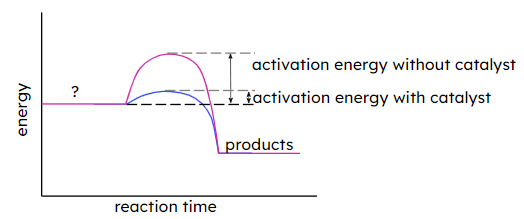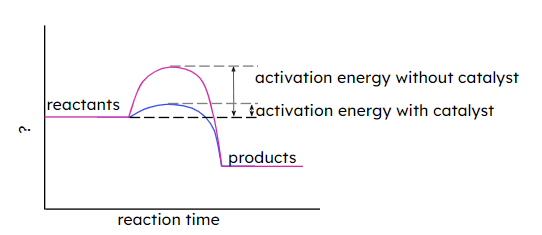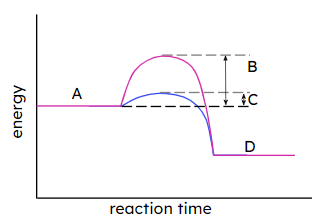Catalysts and rate
I can describe what a catalyst does and explain how it affects the rate of reaction in terms of activation energy, and justify its use for a reaction based on experimental results.
Catalysts and rate
I can describe what a catalyst does and explain how it affects the rate of reaction in terms of activation energy, and justify its use for a reaction based on experimental results.
These resources will be removed by end of Summer Term 2025.
Lesson details
Key learning points
- A catalyst affects the reaction rate without being used up.
- A catalyst reduces the activation energy needed for a reaction.
- With a catalyst present, more collisions between reactants result in the formation of product(s).
- Enzymes are biological catalysts.
- Catalysts vary in efficiency; qualitative data helps evaluate effectiveness.
Keywords
Catalyst - A catalyst is a chemical that increases the rate of a reaction without itself being used up.
Activation energy - The minimum energy that the particles must have in order to react is known as the activation energy.
Reaction profiles - Reaction profiles are diagrams that show the energy of the reactants and products in a chemical reaction.
Qualitative data - Qualitative data is information that describes qualities or characteristics that cannot be measured with numbers.
Common misconception
Catalysts increase the amount of product formed.
Catalysts do not affect the quantity of products formed. They increase the rate at which the products are formed.
To help you plan your year 10 chemistry lesson on: Catalysts and rate, download all teaching resources for free and adapt to suit your pupils' needs...
To help you plan your year 10 chemistry lesson on: Catalysts and rate, download all teaching resources for free and adapt to suit your pupils' needs.
The starter quiz will activate and check your pupils' prior knowledge, with versions available both with and without answers in PDF format.
We use learning cycles to break down learning into key concepts or ideas linked to the learning outcome. Each learning cycle features explanations with checks for understanding and practice tasks with feedback. All of this is found in our slide decks, ready for you to download and edit. The practice tasks are also available as printable worksheets and some lessons have additional materials with extra material you might need for teaching the lesson.
The assessment exit quiz will test your pupils' understanding of the key learning points.
Our video is a tool for planning, showing how other teachers might teach the lesson, offering helpful tips, modelled explanations and inspiration for your own delivery in the classroom. Plus, you can set it as homework or revision for pupils and keep their learning on track by sharing an online pupil version of this lesson.
Explore more key stage 4 chemistry lessons from the Rate of reaction unit, dive into the full secondary chemistry curriculum, or learn more about lesson planning.

Licence
Starter quiz
6 Questions


Exit quiz
6 Questions



